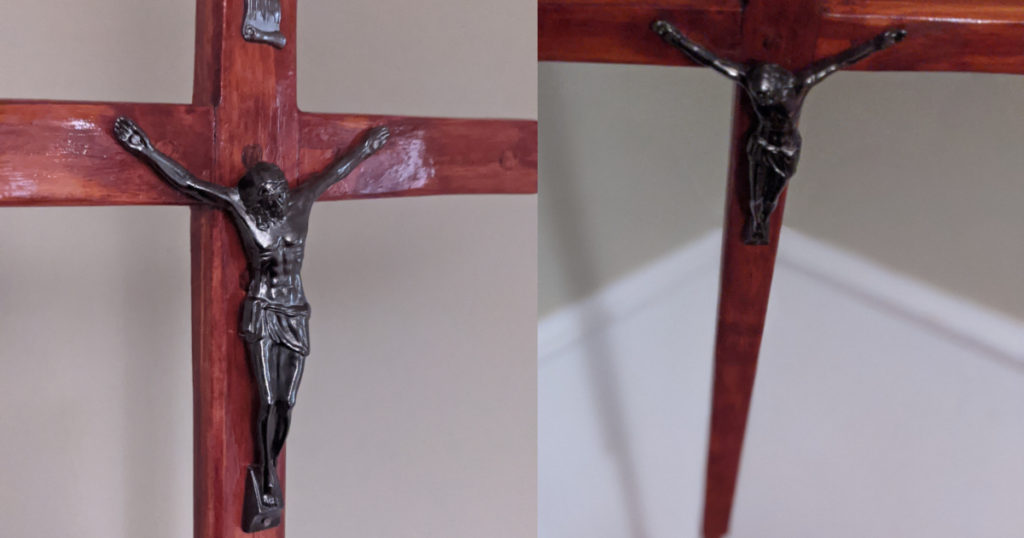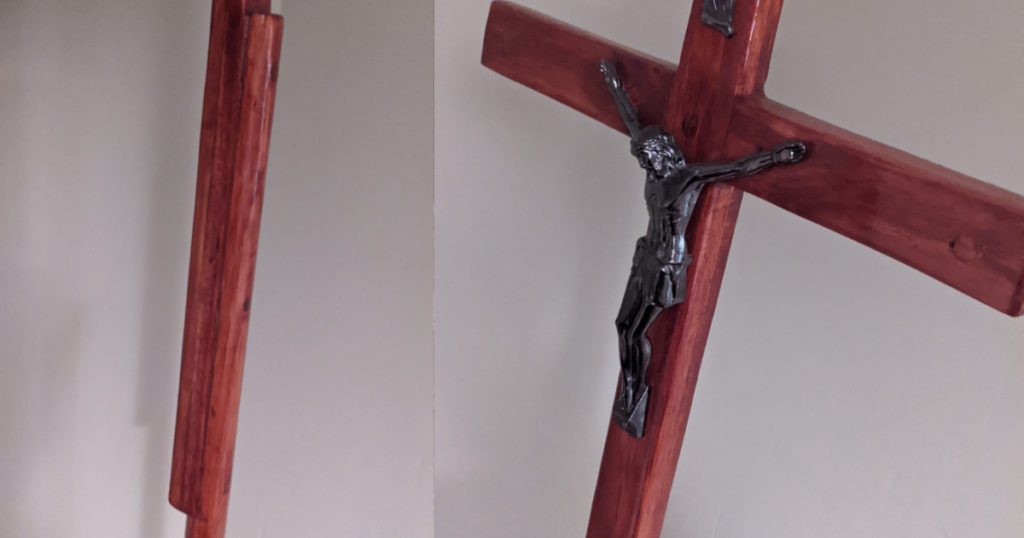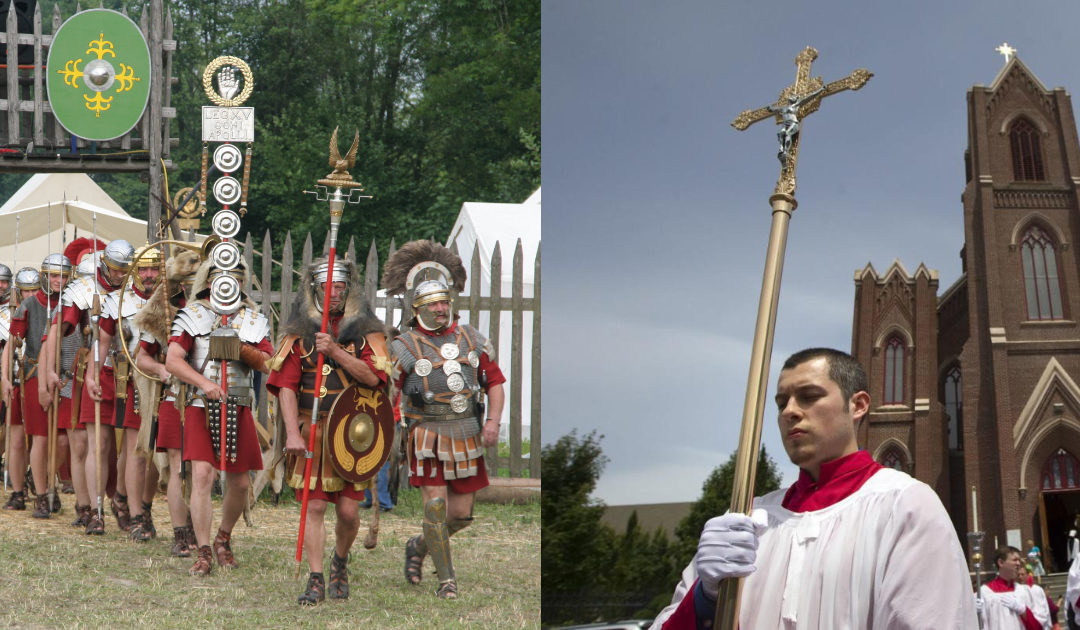To symbolize ancient Rome’s military might, each legion carried before it a standard depicting the Eagle. Clutched in the Eagle’s claws were lightning bolts of Jupiter (greatest of the Roman gods), signifying Rome’s power over even divinity. Another poignant symbol of Rome’s power was the cross of crucifixion. A slow and excruciatingly torturous death awaited Rome’s enemies, and the cross visibly served as an unsubtle warning that such a painful, public, and humiliating death would result for all who would not bend the knee to Rome’s dominion.
Since the early Church, Christians have rallied behind the cross of Jesus as their symbol because his resurrection proclaims that not even death has power over Christ, lest the inconsequential Roman authorities. Through today, the Church processes behind the cross, and in the Catholic tradition, the crucifix depicts the fullness of the cross’s meaning. The processional cross is an understated taunt—that the Rome who crucified Jesus of Nazareth has long turned to dust, while Christ’s kingdom reigns eternal.
Like armies, and continuing a scouting tradition, Trail Life troops process with flags, symbolizing their country, troop, and patrol, and they typically begin their troop meetings with flag ceremonies. In our Catholic troops, adding a processional cross to the flag ceremony is another way to contribute to an authentic Catholic identity within the troop.
Purchasing a processional cross, often plated with gold or silver, is very expensive. However, for less than forty dollars, your troop can make its own. The following images show a troop’s processional cross, fashioned from a pine dowel and pine craft strips, stained and polyurethaned, and affixed with a metal corpus set. We pledge allegiance to the flag of our country, and a processional cross is a visual reminder to the troop that our worship rightly belongs to God.



Recent Comments